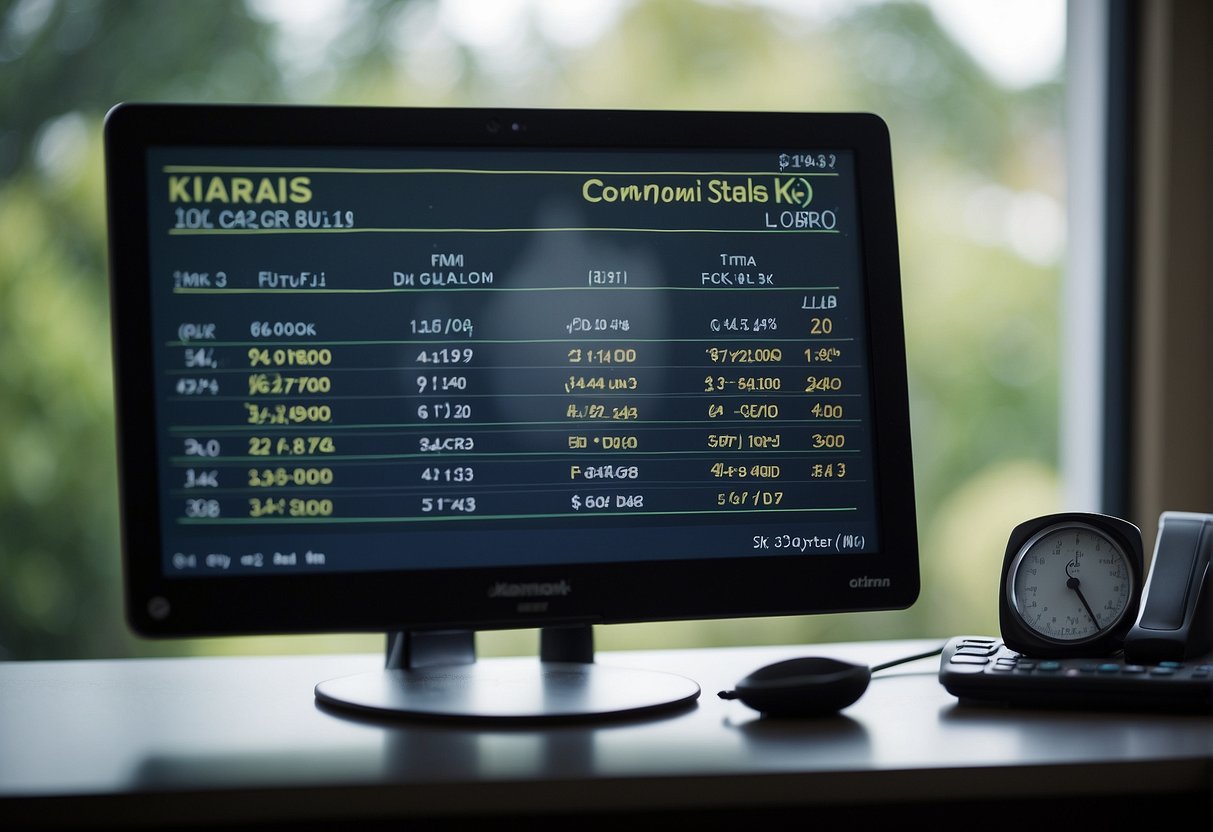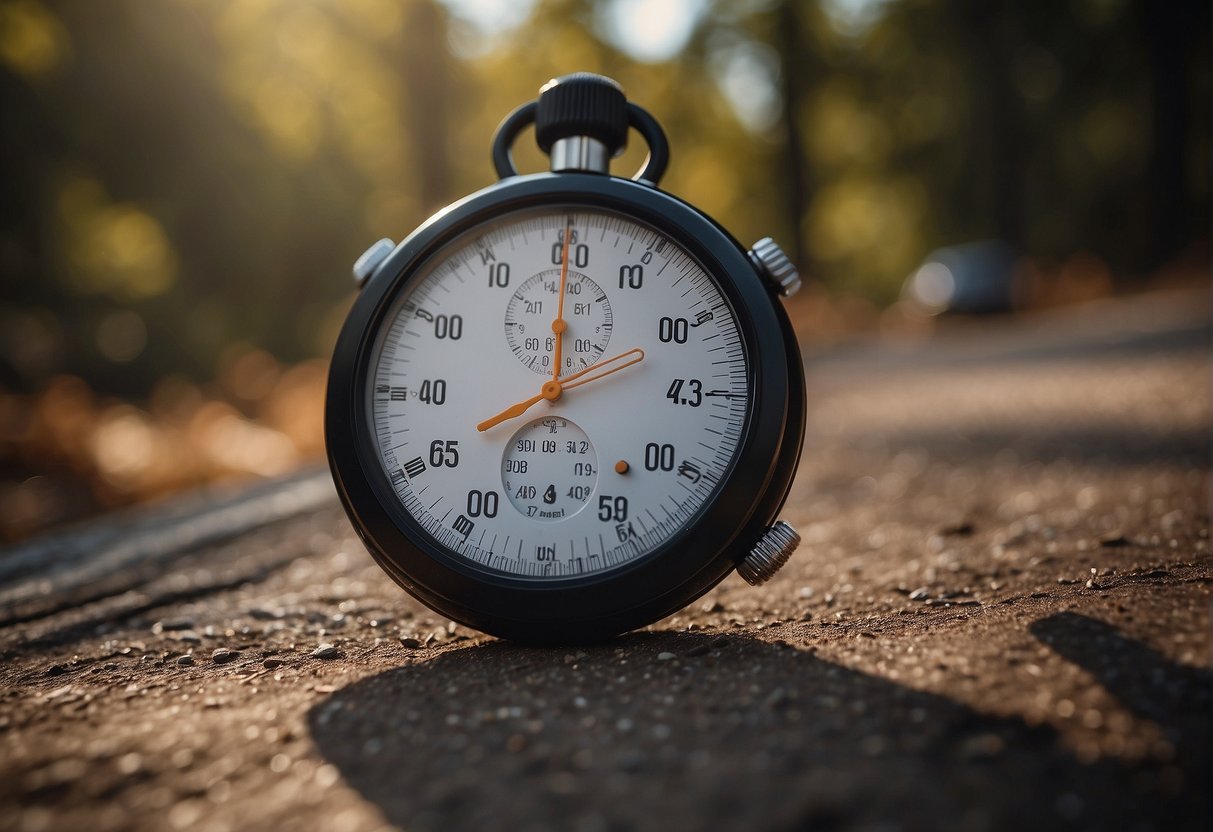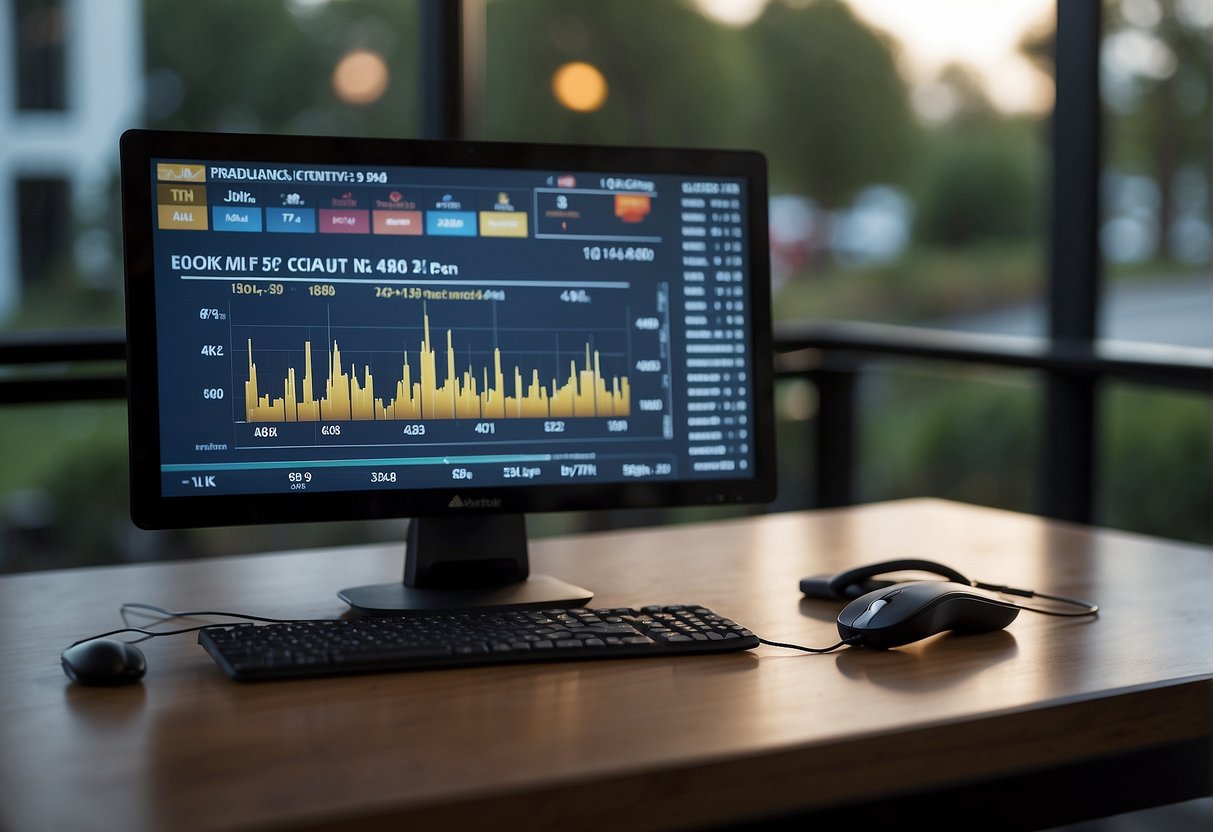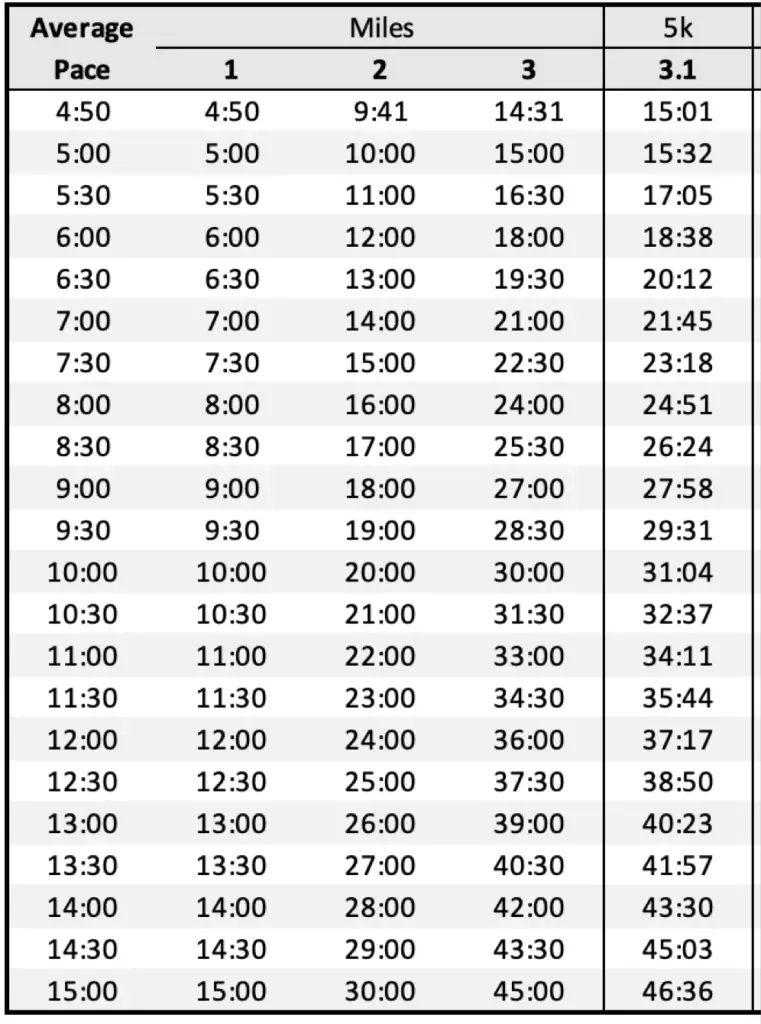When preparing for a 5K, understanding and developing an effective pacing strategy is crucial to meeting your race goals. Our 5K pace chart mph (in miles per hour (mph)) can be a valuable tool, converting your target finish time into a clear mile pace to maintain throughout your run. Knowing your average pace can then inform your training plan, helping you to adjust your speed during workouts to simulate race conditions. Whether aiming to set a personal record or complete your first race, a 5K pace chart provides a tangible target pace to guide your training and race day performance.

Considering the variance in individual fitness levels and goals, pace charts are typically designed with a broad range of finish times. This allows you to pinpoint a mile pace that aligns with your current ability while pushing you toward improvement. For example, if your objective is to run a half marathon or eventually a marathon, the principles gathered from understanding a 5K can scale up to inform your marathon pace chart strategy. Incorporating incremental speed work into your regimen allows you to build endurance and speed conducive to longer distances.
Additionally, your goal pace determines the intensity of your training sessions. Tempo runs, long runs, and intervals become more purposeful when you have a specific mile pace to hit. Whether you’re at the beginning stages of a training plan or fine-tuning your speed in the weeks leading up to the race, a detailed understanding of your required pace is essential. The chart serves as a guide on race day and, more importantly, as a cornerstone of your training leading up to the event.
Understanding 5K Pace

When preparing for a 5K race, understanding your pace is crucial for hitting your target time and finishing strong. Grasping the nuances of your race pace conversion chart and average pace ensures you cross the finish line with your goal in mind.
Essential Pace Calculations
Before lacing up your sneakers, you need a solid grasp of pace calculations. Your 5K pace is usually expressed in minutes per mile or kilometer. You can determine this using a running pace calculator, which provides split times and equivalent speeds based on your goal time. For instance, a 25-minute 5K translates to a pace of 8:03 per mile. Knowing these numbers helps you gauge how fast you should run each section of the race.
Pace Strategies for Race Day
On race day, strategy is as important as stamina. Start by setting a realistic target time, then plan your lap times accordingly. If your target time is aggressive, consider the role of anaerobic exercise and ensure you’re not crossing the anaerobic threshold too early, which can lead to burnout. A steady start with a negative split – running the second half faster than the first – is often a sound strategy. Remember, lack of wind resistance indoors can falsely inflate your pace, so adjust when running outside.
Adjustments for Environmental Factors
Environmental factors can significantly impact your 5K performance. Weather conditions, altitude, and temperature affect your heart rate and energy expenditure. On a hot day, you might find maintaining your average pace more challenging and need to adjust your finish time expectations. Similarly, if you typically train on flat terrain but the racecourse has hills, your split times will likely be slower. Prepare for these variables to avoid surprises on race day.
Practical Application of Pace Charts

Pace charts are an indispensable tool to guide your running pace and help achieve your target time. They provide clarity on what your exact pace should be if you’re aiming for a specific finishing time.
How to Use a 5K Pace Chart MPH
To utilize a 5K pace chart effectively, start by identifying your goal time. If you aspire for a 30-minute 5K, locate this target time on the chart. You’ll find the corresponding pace per mile in the first column, which lists times; the last column will show the related pace. For a 30-minute 5K, you should aim for roughly 9-minute and 39 seconds per mile or 6-minute kilometers. This is a quick way to translate your overall race goal into achievable segment times.
5k Pace Chart mph
| Average Pace | Miles | 5k | ||
| 1 | 2 | 3 | 3.1 | |
| 4:50 | 4:50 | 9:41 | 14:31 | 15:01 |
| 5:00 | 5:00 | 10:00 | 15:00 | 15:32 |
| 5:30 | 5:30 | 11:00 | 16:30 | 17:05 |
| 6:00 | 6:00 | 12:00 | 18:00 | 18:38 |
| 6:30 | 6:30 | 13:00 | 19:30 | 20:12 |
| 7:00 | 7:00 | 14:00 | 21:00 | 21:45 |
| 7:30 | 7:30 | 15:00 | 22:30 | 23:18 |
| 8:00 | 8:00 | 16:00 | 24:00 | 24:51 |
| 8:30 | 8:30 | 17:00 | 25:30 | 26:24 |
| 9:00 | 9:00 | 18:00 | 27:00 | 27:58 |
| 9:30 | 9:30 | 19:00 | 28:30 | 29:31 |
| 10:00 | 10:00 | 20:00 | 30:00 | 31:04 |
| 10:30 | 10:30 | 21:00 | 31:30 | 32:37 |
| 11:00 | 11:00 | 22:00 | 33:00 | 34:11 |
| 11:30 | 11:30 | 23:00 | 34:30 | 35:44 |
| 12:00 | 12:00 | 24:00 | 36:00 | 37:17 |
| 12:30 | 12:30 | 25:00 | 37:30 | 38:50 |
| 13:00 | 13:00 | 26:00 | 39:00 | 40:23 |
| 13:30 | 13:30 | 27:00 | 40:30 | 41:57 |
| 14:00 | 14:00 | 28:00 | 42:00 | 43:30 |
| 14:30 | 14:30 | 29:00 | 43:30 | 45:03 |
| 15:00 | 15:00 | 30:00 | 45:00 | 46:36 |
Training with Pace in Mind
When you incorporate a training plan, it’s beneficial to structure workouts around your target pace. If your goal time warrants 10-minute miles in a race, integrate intervals at this pace into your training. For a structured approach, assign specific days for pace practice, alternating with easier runs to allow recovery. By routinely hitting your target pace in training, you prep your body and mind for your finishing time on race day, making it the best way to meet your objectives.


